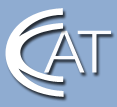Explore high-paying careers in clean, high-tech Connecticut manufacturing.

Educators: Externships
Externship Summary - 2008
RCNGM Leader: Chris Petersen
Externship: Hawk Integrated Plastics
Lessons Learned
The most important and useful component of my externship was seeing how the manufacturing industry has changed since the last time I worked in industry during the late 1970’s. The company I worked for during my externship is an ISO 9001 certified, which didn’t exist when I worked for Wilson Arms right out of high school. The difference in the way the product is tracked, produced and checked for quality control is very different than my recollection of industry practices.
The most challenging part of my externship was being reintroduced to scutwork. When I worked for Wilson Arms in the seventies, I was able to put up with the mindless repetition of the work because of the high pay and the fact that I only had a high school diploma. Now in my forties, I have a lot less tolerance for that kind of work. My regular job is exciting and varied with a lot of intellectual stimulation.
The implementation of the curriculum absolutely met my expectations. I was pleased with the results of the project and the students enthusiastic participation of the process. I noticed a huge difference in the reaction of the students to a normal project that wasn’t manufactured to the project that I implemented for this grant. The students enjoyed the project a lot more and really saw how the design drawings related to the final product. They also made the connection between quality checks and profit. In the final analysis, the success of the curriculum hinged not only on the concepts learned, but in the student enjoyment of the process.
I spoke with the employees of Hawk Plastics about the project and got feedback about my ideas. They did not directly help with the implementation of the project, but they did help with the conception and the formulation of the project.
Impact on Student Learning
I was somewhat skeptical about the students “buy-in” for this project. I was surprised to find that the students became very involved in the process. They saw that if they were going to have to sell the product that they were making, they would have to create a quality item. They found that there were no artificial deadlines, only real ones. They found that mistakes made impacted not just their grades, but the quality and quantity of their rewards (in this case a pizza party). If they made lots of mistakes, they made less profit, and consequently had less money to spend on the post manufacturing party.
Externship Sustainability
We have regular department meetings to share student work. I have shared my project with my colleagues at these meetings. I have also shared my experience with all the technology educators who have signed on to the state’s listserve.
I firmly believe in real world projects in the school system. I plan on continuing to infuse my curriculum with projects that are modeled on current manufacturing processes and procedures. I will be moving from book work to drafting projects that will be actually created. I would like to expand the concept of the pre engineering company to more projects. The school recently acquired a laser cutter/engraver that would enable us to create more products that would be designed and created by students in my class.





